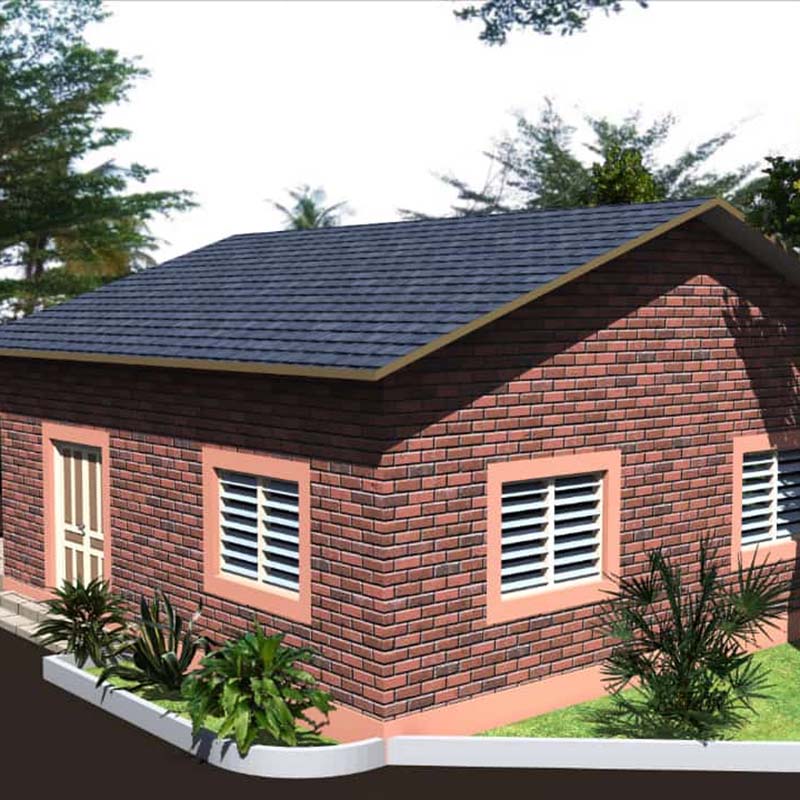
Image source:Aiwei block machine
Introduction:
Architectural design is constantly evolving, driven by advancements in technology and new possibilities offered by innovative tools and materials. Brick making machines have played a significant role in shaping architectural design and creativity. These machines have not only revolutionized the production process but also expanded the horizons of what can be achieved in terms of form, texture, and structural integrity. In this article, we will explore the influence of brick making machines on architectural design and how they have sparked creativity in the field.
Freedom in Form:
Brick making machines have provided architects with newfound freedom in form and design. Traditionally, bricks were limited to standard rectangular shapes, which restricted the architectural possibilities. However, with the advent of machines, custom molds can be created, allowing for the production of bricks in various shapes, sizes, and patterns. This flexibility enables architects to experiment with curvilinear forms, irregular patterns, and intricate detailing, resulting in visually striking and unique architectural designs.
Versatility in Texture:
Brick making machines have expanded the range of textures that can be achieved in architectural designs. Through the use of specialized molds and surface treatments, bricks can now have a variety of textures, from smooth and polished to rough and textured. These textures add depth, visual interest, and tactile qualities to buildings, enhancing their overall aesthetic appeal. Architects can utilize different textures strategically to create contrast, highlight specific areas, or evoke a desired atmosphere.
Structural Innovation:
The introduction of brick making machines has facilitated structural innovation in architectural design. These machines enable the production of bricks with enhanced strength and stability, allowing for the construction of taller and more intricate structures. Architects can explore new possibilities in load-bearing designs, arches, vaults, and complex geometries. The strength and consistency of machine-made bricks provide architects with the confidence to push the boundaries of structural design, resulting in visually captivating and structurally robust buildings.
Integration of Materials:
Brick making machines have encouraged the integration of different materials in architectural design. Architects can combine bricks with other materials such as glass, steel, wood, and concrete to create dynamic and visually appealing facades. The ability to produce bricks with precise dimensions and uniform quality ensures seamless integration and compatibility with other building components. This integration of materials adds depth, contrast, and textural richness to architectural designs, enhancing their overall aesthetic appeal.
Sustainable Design:
Sustainability has become a critical aspect of architectural design, and brick making machines have contributed to sustainable practices. These machines allow for the production of bricks using alternative materials, such as recycled aggregates or locally sourced materials. By reducing the reliance on traditional clay bricks, which require extensive energy and resource consumption, architects can embrace more sustainable design practices. Additionally, the durability and thermal properties of machine-made bricks contribute to energy-efficient buildings, promoting sustainability in the long run.
Speed and Efficiency:
Brick making machines have significantly improved the speed and efficiency of the construction process. The mechanization of brick production allows for faster and more consistent manufacturing, reducing the time required for construction projects. Architects can leverage this efficiency to meet tight deadlines and expedite the completion of their designs. The increased speed of production also enables architects to iterate and experiment with design concepts, facilitating a more dynamic and iterative design process.
Cost-Effectiveness:
The use of brick making machines can lead to cost savings in architectural design and construction. These machines streamline the production process, reduce material waste, and minimize the need for manual labor. The standardized dimensions and quality of machine-made bricks also contribute to efficient construction practices. Architects can leverage these cost advantages to allocate resources to other aspects of the design, such as innovative materials, advanced technologies, or additional creative elements.
Preservation of Craftsmanship:
While brick making machines have introduced mechanization to the production process, they have also preserved the craftsmanship associated with bricklaying. Skilled craftsmen are still involved in the assembly and placement of bricks, ensuring attention to detail and craftsmanship in architectural designs. The integration of machines with skilled labor creates a harmonious balance between technology and traditional craftsmanship, resulting in buildings that showcase the best of both worlds.
Historical References and Contextual Design:
Brick making machines allow architects to incorporate historical references and contextual design elements into their projects. By replicating traditional brick patterns, textures, and colors, architects can pay homage to the local architectural heritage and create a sense of continuity with the surrounding context. This integration of historical references adds depth and cultural significance to architectural designs, fostering a stronger sense of place and identity.
Collaborative Design Process:
The use of brick making machines promotes a collaborative design process between architects, manufacturers, and craftsmen. Architects can work closely with machine manufacturers to explore new possibilities, experiment with materials, and push the boundaries of design. The collaboration between architects and craftsmen ensures that design intent is translated accurately into the final built form. This collaborative approach encourages innovation, problem-solving, and the exchange of knowledge, resulting in architectural designs that are not only visually captivating but also technically feasible.
Conclusion:
Brick making machines have had a profound influence on architectural design and creativity. The freedom in form, versatility in texture, structural innovation, integration of materials, sustainability, speed, efficiency, cost-effectiveness, preservation of craftsmanship, historical references, and collaborative design process are the key ways in which these machines have shaped architectural design. As technology continues to advance, brick making machines will continue to inspire architects to push the boundaries of their creativity, resulting in buildings that are visually stunning, structurally robust, and environmentally sustainable.
